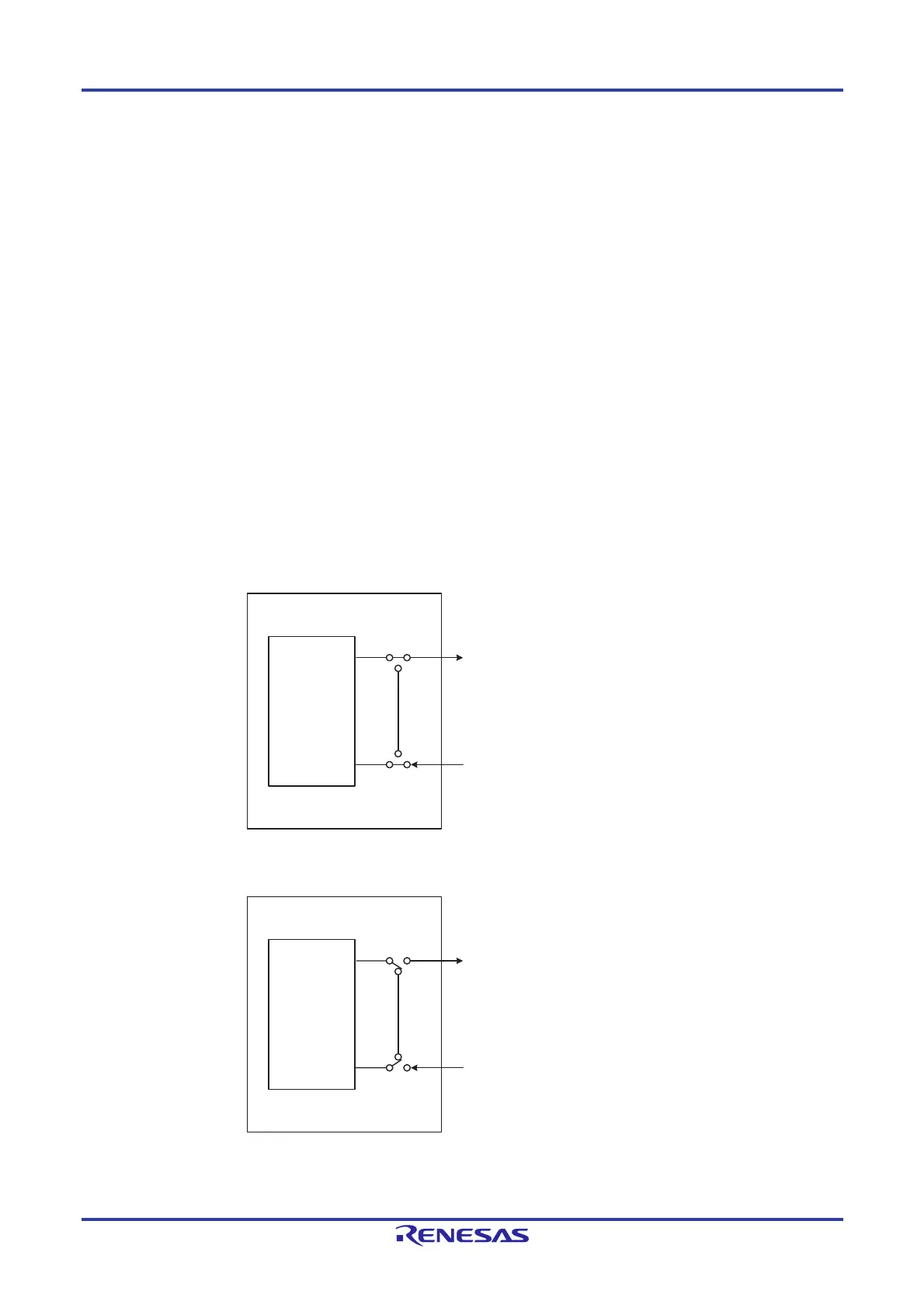RL78/F13, F14 CHAPTER 17 LIN/UART MODULE (RLIN3)
R01UH0368EJ0210 Rev.2.10 1244
Dec 10, 2015
17.6 LIN Self-Test Mode
The LIN/UART module has a LIN self-test mode. When LIN self-testing is turned on, the LTXDn and LRXDn signals are
disconnected from the external pins and connected within the LIN/UART module. Frames transferred from the internal
LTXDn terminal loop back to the internal LRXDn terminal. The LIN self-test mode is exclusively for testing LIN mode
operation.
The following four types of tests are available:
LIN master self-test mode (transmission): header transmission and response transmission
LIN master self-test mode (reception): header transmission and response reception
LIN slave self-test mode (transmission): header reception and response transmission
LIN slave self-test mode (reception): header reception and response reception
In the LIN self-test mode, the LIN/UART module operates at the highest baud rate regardless of the setting of the baud
rate generator. The baud rate is <frequency of the LIN communications clock source>/16 bps regardless of the settings of
the baud rate related registers (the NSPB bit in the LWBRn register must be set to 0000b or 1111b).
In the LIN self-test mode, the following functions are not supported. Do not use these functions.
LIN wake-up mode
Frame separate mode
Multi-byte response reception and transmission
LIN slave mode [auto baud rate]
Frame/response timeout error
Figure 17-39. Connection in LIN Reset Mode, LIN Mode and UART Mode
Figure 17-40. Connection in LIN Self-Test Mode
LTXDn pin
LRXDn pin
Internal LTXDn
Internal LRXDn
LIN controller
Input to or output from LIN transceiver
LTXDn pin
LRXDn pin
Internal LTXDn
Internal LRXDn
LIN controller
Input to or output from LIN transceiver

